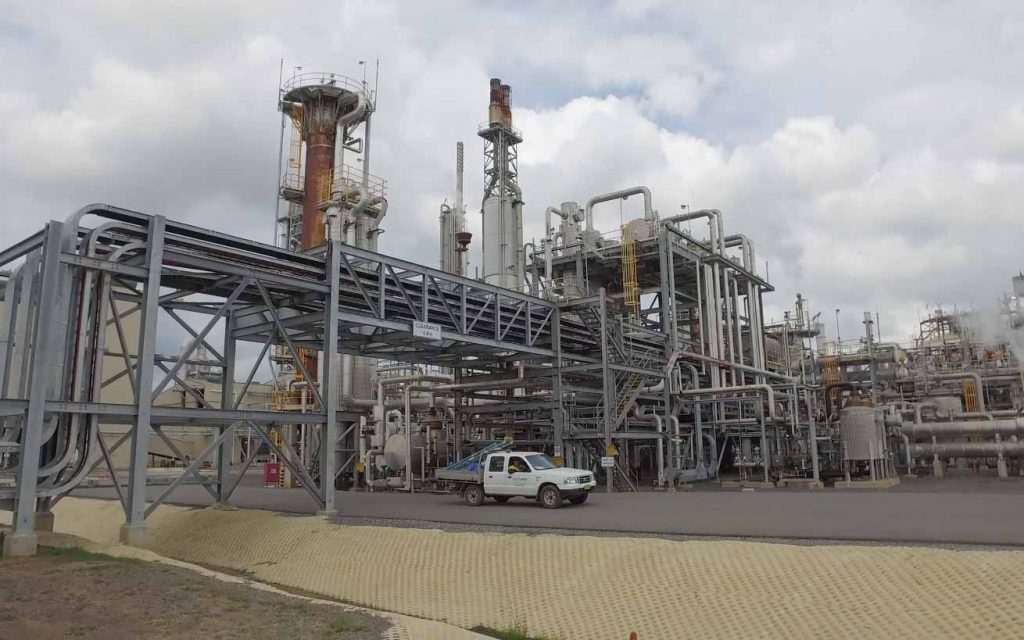Renewable future beckons for Queensland ammonia plants
Dyno Nobel will assess the feasibility of creating the world’s largest renewable ammonia plant at their Moranbah facility in the heart of the coal-rich Bowen Basin.

Their ammonia project will explore whether it is feasible for the explosive manufacturing arm of Incitec Pivot Limited to produce ammonia using hydrogen supplied by a 160 MW electrolyser, which would be powered by a 210 MW solar farm.
If Dyno Nobel’s plan is found to stack up, green hydrogen could provide a renewable way to meet growing demand for ammonium nitrate from their mining industry customers.
A second study will assess the feasibility of using Neoen’s wind and solar farms to produce hydrogen at Queensland Nitrates’ ammonia plant near Moura. The consortium of QNP, Neoen and Worley proposes to produce 20,000 tonnes of ammonia per year from 3600 tonnes of renewable hydrogen.
ARENA is providing $980,000 to Dyno Nobel and $1.9 million to Queensland Nitrates, as part of the agency’s work to advance renewable hydrogen and reduce industry emissions.
The ammonia industry has been identified as an early opportunity for producing green hydrogen at industrial scale as it consumes half of all deliberate hydrogen produced globally through an emissions intensive process responsible for more than one per cent of the world’s CO2 emissions.
The two ammonia projects join a growing list of renewable hydrogen proposals being developed around the country, and will provide insights about the technical and economic feasibility of producing green hydrogen at a commercial scale.
Both Dyno Nobel and Queensland Nitrates are well-positioned to embrace renewable hydrogen, with existing customer bases, hydrogen infrastructure already in place, and established supply chains.
Green future for regional Queensland town?
Used in vast quantities in industrial processes and to produce agricultural fertilisers, ammonia is the single largest consumer of hydrogen worldwide.
Incitec Pivot’s President of Global Manufacturing Tim Wall said the Dyno Nobel study could help to determine whether renewable energy could underpin an expansion of their manufacturing base.
“The aim of the feasibility study is to determine whether renewable hydrogen can be produced in a way that makes commercial sense to support expanding our Moranbah manufacturing facility in central Queensland,” Tim Wall said.
Located about 200 kilometres south-west of Mackay, Moranbah is home to 9000 permanent residents and has a large fly-in fly-out population who work in nearby mines. The town is poised to benefit from the growth of renewables like Collinsville has with solar farms, further north in the Bowen Basin.
“We are pleased to be working with ARENA to determine whether we can lower the cost of producing renewable hydrogen at industrial scale, which would support local industry and jobs, and reduce our carbon footprint,” he said.
Bringing down the cost of hydrogen production using renewable energy is a priority for ARENA, but the studies also support the agency’s newly announced investment priority on reducing emissions across Australia’s industrial sector.
The two ammonia projects could advance both priorities, providing a pathway to commercialisation for hydrogen electrolyser technology as well as a greener future for the ammonia industry.
ARENA CEO Darren Miller said the projects were the first step to decarbonising the ammonia sector, and will also progress the commercialisation of renewable hydrogen for domestic and international use.
“Hydrogen is a huge opportunity for Australia, both for domestic use and as an export opportunity,” Darren Miller said.
“We believe that you cannot realise the export potential without a domestic market, which is why ARENA is looking to fund renewable ammonia and other domestic applications.”
An ARENA-funded study last year found hydrogen exports could contribute $1.7 billion per annum to the economy and provide 2800 jobs by 2030, driven by growing demand from Japan, South Korea, China and Singapore.
“Given ammonia production is an energy-intensive industry that accounts for one per cent of global emissions, this project could also help the ammonia industry to reduce its emissions by switching to renewable hydrogen,” he said.
LIKE THIS STORY? SIGN UP TO OUR NEWSLETTER

ARENA